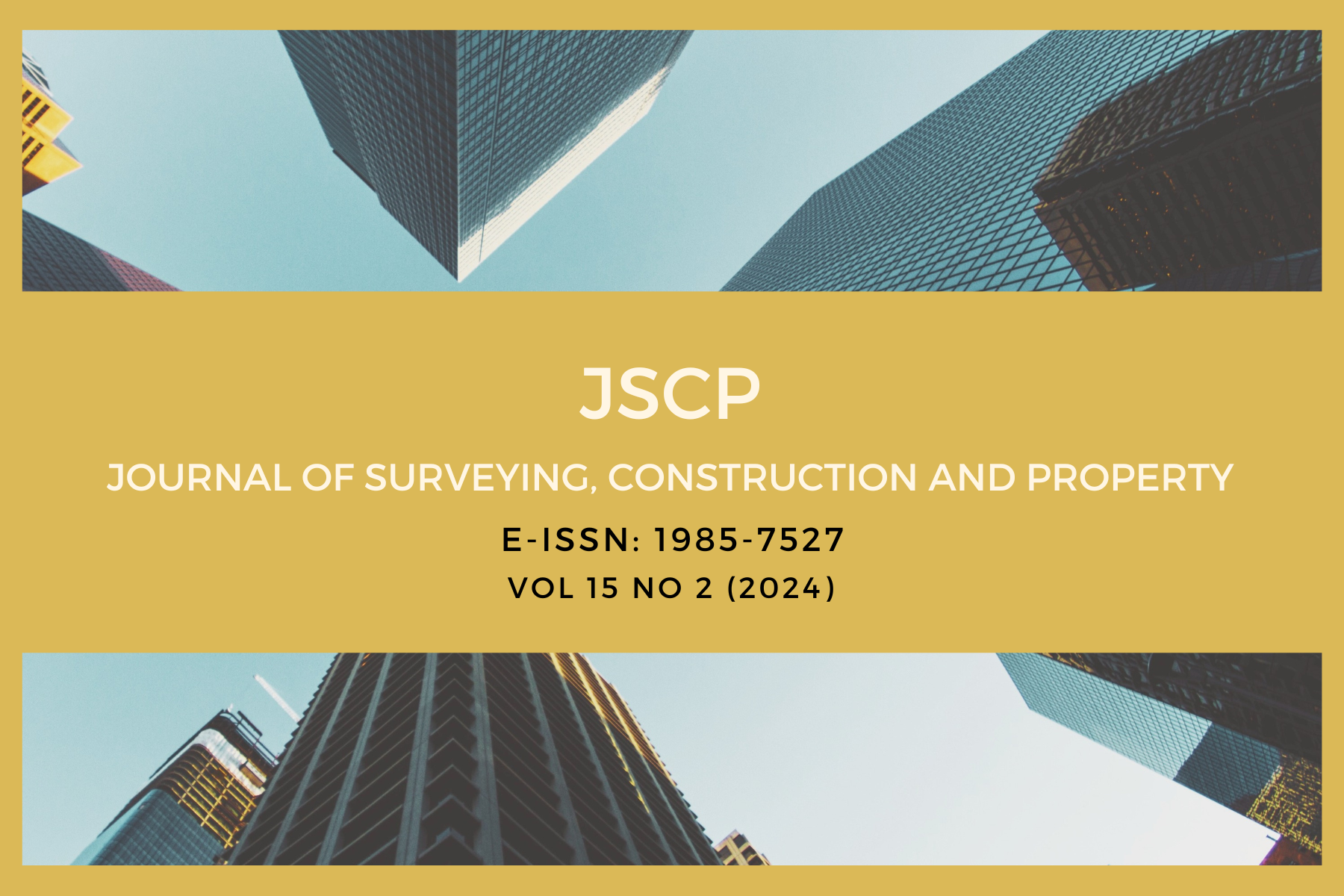CHALLENGES AND OPPORTUNITIES OF IMPLEMENTING ICT SYSTEMS IN OFFICE BUILDING MAINTENANCE IN KUALA LUMPUR
Main Article Content
Abstract
Maintenance is crucial for any building throughout its entire lifespan. The primary goal of building maintenance is to maintain all components and facilities in their original and functional condition to ensure continuous efficient operation. The widespread adoption of maintenance software has paved the way for more efficient communication within maintenance management, improving the effectiveness and efficiency of maintenance activities. Previous research has highlighted several challenges in the implementation of Information and Construction Technology (ICT) systems in maintenance management. This study aims to explore the key challenges associated with the use of ICT systems in maintenance management, with a specific focus on office buildings in Malaysia. A qualitative approach was adopted for this study, involving semi-structured interviews. A total of five interviewees were selected from three (3) office buildings. The findings show that two types of ICT systems—the Building Automation System (BAS) and the ARCHIBUS system—were utilised in the maintenance management of the three office buildings. This study identifies various issues and challenges that arise when implementing these ICT systems, including a lack of professional expertise in operating the systems, inaccurate information, risks of connection loss, time consumption, limitations in capability, cybersecurity threats, and financial constraints. Common issues faced across different management teams and ICT systems include a shortage of qualified personnel, time inefficiencies, and limitations in system capabilities. These challenges must be addressed promptly to enhance the efficiency and value of ICT systems in maintenance management. Effective building maintenance in office buildings is essential to ensure that all services and facilities operate smoothly and to prevent any potential downtime.
Downloads
Article Details
COPYRIGHT: All rights reserved. No part of this journal may be reproduced, copied, or transmitted in any form or by any means—electronic, mechanical, photocopying, recording, or otherwise without proper written permission from the publisher. Any opinions expressed in the articles are those of the authors and do not necessarily reflect the views of the Universiti Malaya, 50603 Kuala Lumpur, Malaysia.
